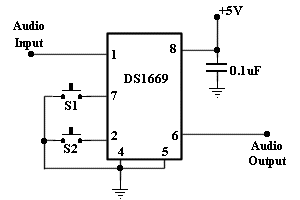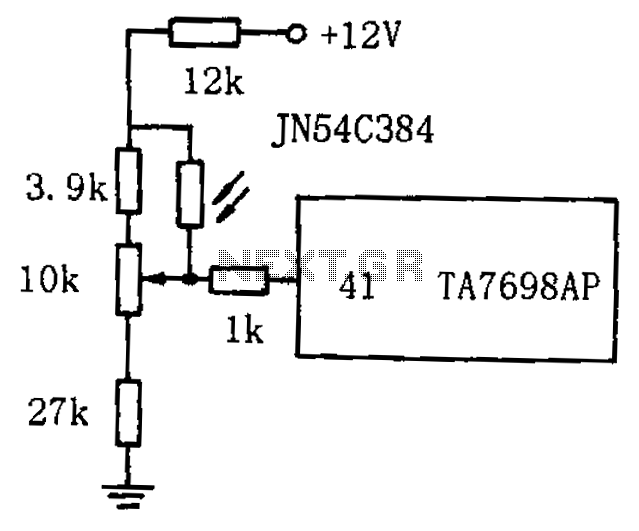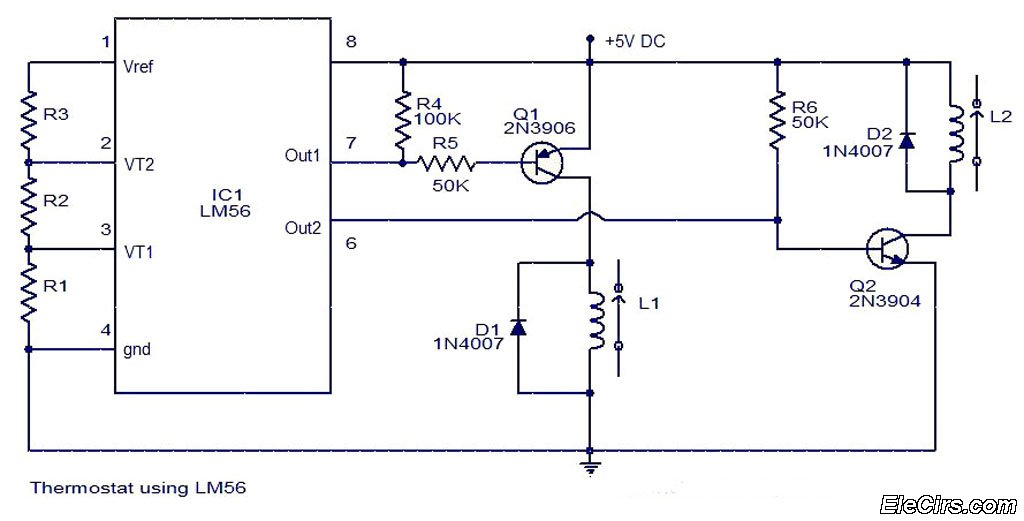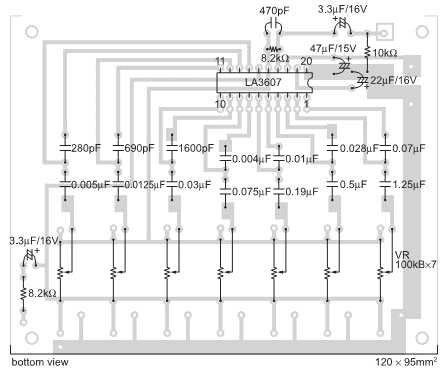
0-24v digital variable power supply circuit
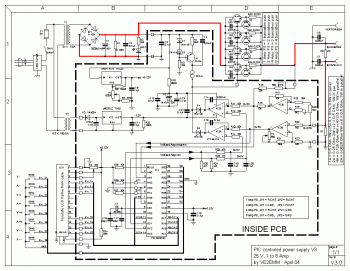
The following circuit diagram depicts a variable power supply controlled by a PIC microcontroller. An LCD display is utilized to show the actual output current and voltage values. This digital power supply incorporates a push-button switch to adjust the output voltage and current settings.
The circuit operates by utilizing a PIC microcontroller as the central control unit, which manages the output voltage and current levels based on user input. The microcontroller interfaces with an analog-to-digital converter (ADC) to monitor the output voltage and current, ensuring accurate readings displayed on the LCD. The LCD is connected via an appropriate communication protocol, such as I2C or SPI, allowing for efficient data transfer and display updates.
The power supply features a voltage regulator circuit, which may include components such as operational amplifiers, MOSFETs, or linear regulators to achieve the desired output characteristics. The push-button switch is connected to the microcontroller's GPIO pins, enabling the user to increment or decrement the output voltage and current. Debouncing techniques may be implemented in the software to ensure stable readings during adjustments.
Additional components may include protection diodes to prevent back EMF, capacitors for filtering noise, and resistors for setting reference voltages. The design may also incorporate thermal management features to prevent overheating during operation, ensuring reliability and longevity of the power supply.
This variable power supply circuit is suitable for various applications, including laboratory experiments, testing electronic devices, and powering prototype circuits. Its digital interface provides a user-friendly experience, allowing for precise adjustments and monitoring of output parameters.The following circuit diagram is a variable power supply which controlled by PIC microcontroller. The LCD display is used to showing the actual value of output current voltage. This is a digital power supply, use the push on switch to adjust the output voltage and current value. 🔗 External reference
The circuit operates by utilizing a PIC microcontroller as the central control unit, which manages the output voltage and current levels based on user input. The microcontroller interfaces with an analog-to-digital converter (ADC) to monitor the output voltage and current, ensuring accurate readings displayed on the LCD. The LCD is connected via an appropriate communication protocol, such as I2C or SPI, allowing for efficient data transfer and display updates.
The power supply features a voltage regulator circuit, which may include components such as operational amplifiers, MOSFETs, or linear regulators to achieve the desired output characteristics. The push-button switch is connected to the microcontroller's GPIO pins, enabling the user to increment or decrement the output voltage and current. Debouncing techniques may be implemented in the software to ensure stable readings during adjustments.
Additional components may include protection diodes to prevent back EMF, capacitors for filtering noise, and resistors for setting reference voltages. The design may also incorporate thermal management features to prevent overheating during operation, ensuring reliability and longevity of the power supply.
This variable power supply circuit is suitable for various applications, including laboratory experiments, testing electronic devices, and powering prototype circuits. Its digital interface provides a user-friendly experience, allowing for precise adjustments and monitoring of output parameters.The following circuit diagram is a variable power supply which controlled by PIC microcontroller. The LCD display is used to showing the actual value of output current voltage. This is a digital power supply, use the push on switch to adjust the output voltage and current value. 🔗 External reference

